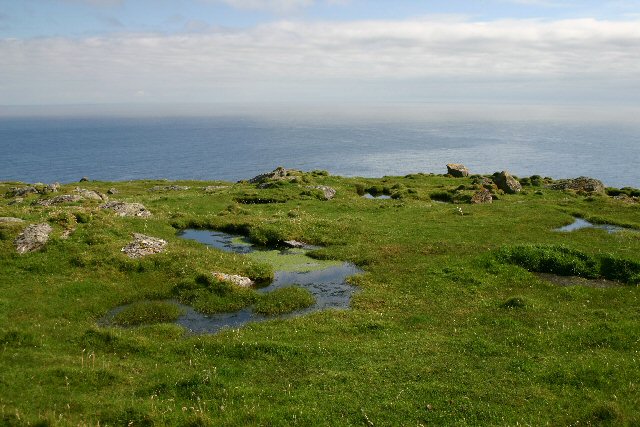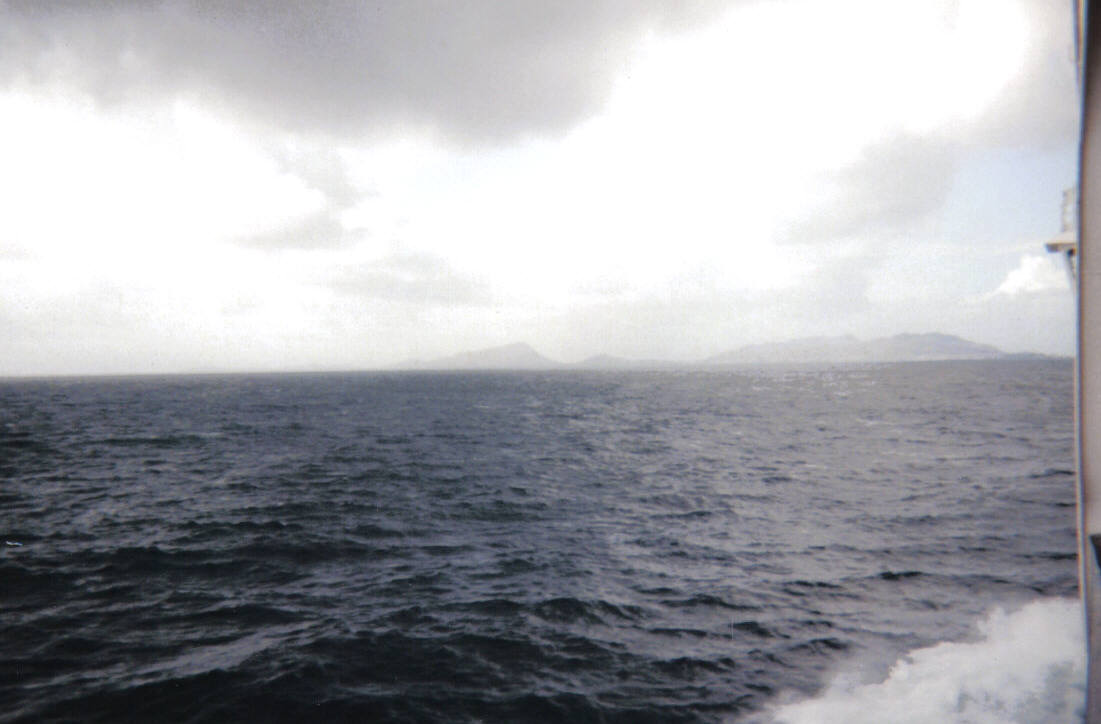|
List Of Outer Hebrides
The Outer Hebrides is a chain of more than 100 islands and small skerries located about west of mainland Scotland. There are 15 inhabited islands in this archipelago, which is also known as the Western Isles and archaically as the Long Isle ( gd, An t-Eilean Fada). Lewis and Harris is the largest island in Scotland and the third largest in the British Isles, after Great Britain and Ireland. It incorporates Lewis in the north and Harris in the south, both of which are frequently referred to as individual islands, although they are joined by a land border. The largest settlement in Lewis and in the Outer Hebrides is Stornoway. To the south across the Sound of Harris lie the Uists and Benbecula, which were joined by a series of causeways constructed between 1940 and 1960 to improve transport links."Fleet Histories" |
Barra Head
Barra Head, also known as Berneray ( gd, Beàrnaraigh; sco, Barra Heid), is the southernmost island of the Outer Hebrides in Scotland. Within the Outer Hebrides, it forms part of the Barra Isles archipelago. Originally, Barra Head only referred to the southernmost headland of Berneray but is now a common name for the entire island. The highest point of the island is Sotan, a Marilyn. There are numerous prehistoric structures on the island and permanent occupation by 20–50 individuals occurred throughout the historic period, peaking in the 19th century. The economy of the residents was based on agriculture, fishing and fowling. The cliffs provide nesting sites for seabirds in such profusion that Berneray has been designated as a Special Protection Area. The Barra Head Lighthouse, designed by Robert Stevenson, has operated since 1833. From 1931 to 1980 Barra Head was inhabited only by the lighthouse keepers and their wives but the lighthouse is now automated and t ... [...More Info...] [...Related Items...] OR: [Wikipedia] [Google] [Baidu] |
Harris Tweed
Harris Tweed, (''Clò Mór'' or ''Clò Hearach'' in Gaelic) is a tweed (cloth), tweed cloth that is Weaving, handwoven by islanders at their homes in the Outer Hebrides of Scotland, finished in the Outer Hebrides, and made from pure virgin wool dyed and Spinning (textiles), spun in the Outer Hebrides. This definition, quality standards and protection of the Harris Tweed name are enshrined in the Harris Tweed Act 1993. Etymology The original name of tweed fabric was ''"tweel"'', the Scots language, Scots word for twill, as the fabric was woven in a twill weave rather than a plain (or tabby) weave. A number of theories exist as to how and why ''"tweel"'' became corrupted into "tweed"; in one, a London merchant in the 1830s, upon receiving a letter from a Hawick firm inquiring after ''"tweels"'', misinterpreted the spelling as a trade name taken from the River Tweed, which flows through the Scottish Borders. Subsequently, the goods were advertised as "tweed", the name used ever sinc ... [...More Info...] [...Related Items...] OR: [Wikipedia] [Google] [Baidu] |
Croft (land)
A croft is a fenced or enclosed area of land, usually small and arable, and usually, but not always, with a crofter's dwelling thereon. A crofter is one who has tenure and use of the land, typically as a tenant farmer, especially in rural areas. Etymology The word ''croft'' is West Germanic in etymology and is now most familiar in Scotland, most crofts being in the Highlands and Islands area. Elsewhere the expression is generally archaic. In Scottish Gaelic, it is rendered (, plural ). Legislation in Scotland The Scottish croft is a small agricultural landholding of a type that has been subject to special legislation applying to the Scottish Highlands since 1886. The legislation was largely a response to the complaints and demands of tenant families who were victims of the Highland Clearances. The modern crofters or tenants appear very little in evidence before the beginning of the 18th century. They were tenants at will underneath the tacksman and wadsetters, but practi ... [...More Info...] [...Related Items...] OR: [Wikipedia] [Google] [Baidu] |
Scottish Gaelic
Scottish Gaelic ( gd, Gàidhlig ), also known as Scots Gaelic and Gaelic, is a Goidelic language (in the Celtic branch of the Indo-European language family) native to the Gaels of Scotland. As a Goidelic language, Scottish Gaelic, as well as both Irish and Manx, developed out of Old Irish. It became a distinct spoken language sometime in the 13th century in the Middle Irish period, although a common literary language was shared by the Gaels of both Ireland and Scotland until well into the 17th century. Most of modern Scotland was once Gaelic-speaking, as evidenced especially by Gaelic-language place names. In the 2011 census of Scotland, 57,375 people (1.1% of the Scottish population aged over 3 years old) reported being able to speak Gaelic, 1,275 fewer than in 2001. The highest percentages of Gaelic speakers were in the Outer Hebrides. Nevertheless, there is a language revival, and the number of speakers of the language under age 20 did not decrease between the 2001 and ... [...More Info...] [...Related Items...] OR: [Wikipedia] [Google] [Baidu] |
Comhairle Nan Eilean Siar
Comhairle nan Eilean Siar (, for, , Scottish Gaelic, Council of the Western Isles) is the local government council for ''Na h-Eileanan Siar'' (the Outer Hebrides) council area of Scotland."Areas of Scotland" ourscotland.co.uk. Retrieved 1 June 2010."Place-names of Scotland" scotlandsplaces.gov.uk. Retrieved 1 June 2010. It is based in in the . Name ...[...More Info...] [...Related Items...] OR: [Wikipedia] [Google] [Baidu] |
Sea Of The Hebrides
The Sea of the Hebrides ( gd, An Cuan Barrach, ) is a small, partly sheltered section of the North Atlantic Ocean, indirectly off the southern part of the north-west coast of Scotland. To the east are the mainland of Scotland and the northern Inner Hebrides (including Skye and the Small Isles); to the west are the southern Outer Hebrides islands, principally South Uist, Eriskay, and Barra. To the north is the Little Minch, a channel connecting it with the Minch. The Sea of the Hebrides forms part of the Inner Seas off the West Coast of Scotland, as defined by the International Hydrographic Organization, and part of the Seas west of Scotland as far as fisheries management is concerned. Ending on 30 August 2019, the Scottish Government consulted on a proposal to designate the Sea of the Hebrides a Marine Protected Area (MPA). The designation was confirmed in December 2020. The designated area of the MPA covers , mainly to protect the area's population of basking sharks and mi ... [...More Info...] [...Related Items...] OR: [Wikipedia] [Google] [Baidu] |
The Minch
The Minch ( gd, An Cuan Sgitheanach, ', ', '), also called North Minch, is a strait in north-west Scotland, separating the north-west Scottish Highlands, Highlands and the northern Inner Hebrides from Lewis and Harris in the Outer Hebrides. It was known as ("Scotland's fjord/firth") in Old Norse. The Lower Minch (), also known as the Little Minch, is the Minch's southern extension, separating Skye from the lower Outer Hebrides: North Uist, Benbecula, South Uist, Barra etc. It opens into the Sea of the Hebrides. The Little Minch is the northern limit of the Sea of the Hebrides. Geography The Minch and Lower Minch form part of the Inner Seas off the West Coast of Scotland, as defined by the International Hydrographic Organization. The Minch ranges from wide and is approximately long. It is believed to be the site of the Ullapool bolide impact, biggest meteorite ever to hit the British Isles. The Lower Minch is about wide. In June 2010 Eilidh Macdonald became the first person ... [...More Info...] [...Related Items...] OR: [Wikipedia] [Google] [Baidu] |
Inner Hebrides
The Inner Hebrides (; Scottish Gaelic: ''Na h-Eileanan a-staigh'', "the inner isles") is an archipelago off the west coast of mainland Scotland, to the south east of the Outer Hebrides. Together these two island chains form the Hebrides, which experience a mild oceanic climate. The Inner Hebrides comprise 35 inhabited islands as well as 44 uninhabited islands with an area greater than . Skye, Mull, and Islay are the three largest, and also have the highest populations. The main commercial activities are tourism, crofting, fishing and whisky distilling. In modern times the Inner Hebrides have formed part of two separate local government jurisdictions, one to the north and the other to the south. Together, the islands have an area of about , and had a population of 18,948 in 2011. The population density is therefore about . There are various important prehistoric structures, many of which pre-date the first written references to the islands by Roman and Greek authors. In the ... [...More Info...] [...Related Items...] OR: [Wikipedia] [Google] [Baidu] |
Admiralty Chart
Admiralty charts are nautical charts issued by the United Kingdom Hydrographic Office (UKHO) and subject to Crown Copyright. Over 3,500 Standard Nautical Charts (SNCs) and 14,000 Electronic Navigational Charts (ENCs) are available with the Admiralty portfolio offering the widest official coverage of international shipping routes and ports, in varying detail. Admiralty charts have been produced by UKHO for over 200 years, with the primary aim of saving and protecting lives at sea. The core market for these charts includes over 40,000 defence and merchant ships globally. Today, their products are used by over 90% of ships trading internationally. History The British admiralty charts are compiled, drawn and issued by the Hydrographic Office. This department of the Admiralty was established under Earl Spencer by an order in council in 1795, consisting of the Hydrographer, Alexander Dalrymple, one assistant and a draughtsman. The initial remit was to organise the cha ... [...More Info...] [...Related Items...] OR: [Wikipedia] [Google] [Baidu] |
North Uist
North Uist ( gd, Uibhist a Tuath; sco, North Uise) is an island and community in the Outer Hebrides of Scotland. Etymology In Donald Munro's ''A Description of the Western Isles of Scotland Called Hybrides'' of 1549, North Uist, Benbecula and South Uist are described as one island of ''Ywst'' (Uist). Starting in the south of this 'island', he described the division between South Uist and Benbecula where "the end heirof the sea enters, and cuts the countrey be ebbing and flowing through it". Further north of Benbecula he described North Uist as "this countrey is called Kenehnache of Ywst, that is in Englishe, the north head of Ywst".''A Description of the Western Isles of Scotland Called Hybrides''; Monro, Donald, 1549 Some have taken the etymology of Uist from Old Norse, meaning "west", much like Westray in Orkney. Another speculated derivation of Uist from Old Norse is ', derived from ' meaning "an abode, dwelling, domicile". A Gaelic etymology is also possible, with ' meanin ... [...More Info...] [...Related Items...] OR: [Wikipedia] [Google] [Baidu] |
Rockall
Rockall () is an uninhabitable granite islet situated in the North Atlantic Ocean. The United Kingdom claims that Rockall lies within its exclusive economic zone (EEZ) and is part of its territory, but this claim is not recognised by Ireland. It and the nearby skerries of Hasselwood Rock and Helen's Reef are the only emergent parts of the Rockall Plateau. The rock was formed by magmatism as part of the North Atlantic Igneous Province during the Paleogene. Rockall's approximate distances from the closest islands in each direction are as follows: It is west of Soay, Scotland; northwest of Tory Island, Ireland; and south of Iceland. The nearest permanently inhabited place is North Uist, an island in the Outer Hebrides of Scotland, to the east. The United Kingdom claimed Rockall in 1955 and incorporated it as a part of Scotland in 1972. The UK does not make a claim to extended EEZ based on Rockall, as it has ratified the United Nations Convention on the Law of the Sea (UNCLOS ... [...More Info...] [...Related Items...] OR: [Wikipedia] [Google] [Baidu] |








